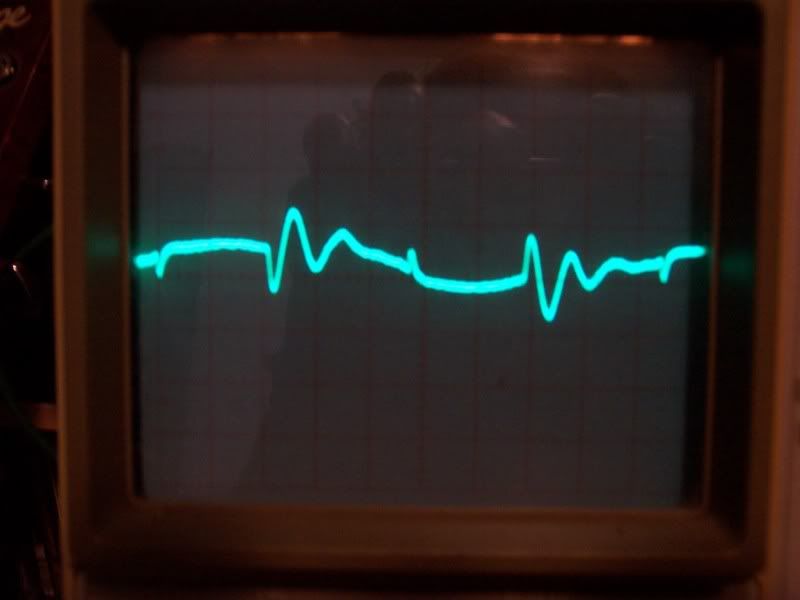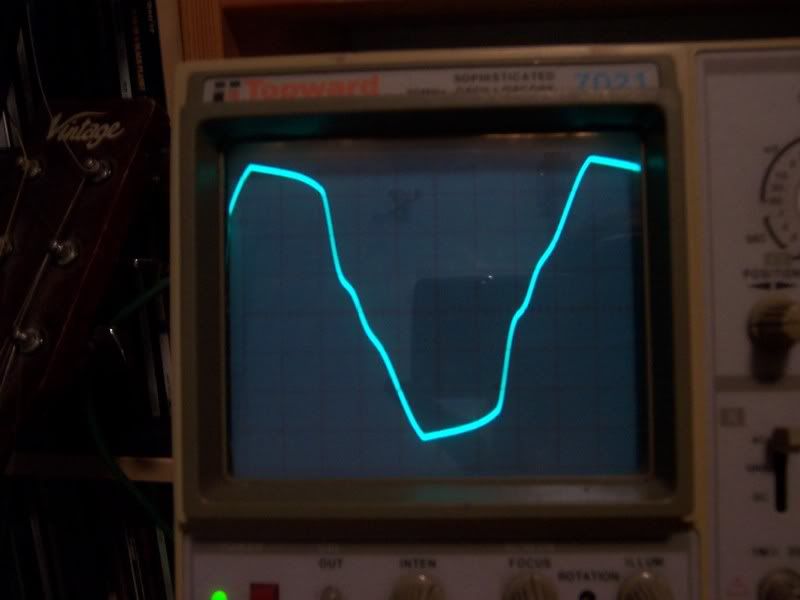I've built quite a high gain amp and I'm getting a lot of hard, obnoxious buzz.
Here is the output trace with no input signal applied - gain and volume on full.

I tried adding snubbers to the diodes (which are UF4007s in a full-wave bridge), which seemed to help a little bit, but not much. Here is the trace with 10nF snubbers across each diode and a 1uF cap across the HT secondaries (I think the latter is responsible for the "ringing" shape):

Presumably what I am seeing is switching noise... and I can't seem to find much about the effectiveness of snubbers - is it actually possible to eliminate this noise? If so, what am I doing wrong with my 10nF caps?
Also, my heater looks like this:

how important is it that heaters are run off a pure sine wave?
Here is the output trace with no input signal applied - gain and volume on full.

I tried adding snubbers to the diodes (which are UF4007s in a full-wave bridge), which seemed to help a little bit, but not much. Here is the trace with 10nF snubbers across each diode and a 1uF cap across the HT secondaries (I think the latter is responsible for the "ringing" shape):

Presumably what I am seeing is switching noise... and I can't seem to find much about the effectiveness of snubbers - is it actually possible to eliminate this noise? If so, what am I doing wrong with my 10nF caps?
Also, my heater looks like this:

how important is it that heaters are run off a pure sine wave?
Comment